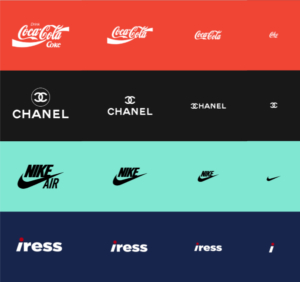Competitor Geofencing Advertising
Geofencing advertising allows you to target people near your business and entice them to visit your store. It’s an effective way to get people in your store that weren’t planning on visiting originally.
But what about people who are near or visiting a competitor’s store? How can you get them to visit your business instead of the competition?
With competitor geofencing advertising, also known as geo-conquesting, it’s possible to drive those leads to your business.
On this page, we’ll discuss the basics of competitor geofencing advertising and four tips on how you can successfully implement it into your marketing strategy. To learn more about how your custom geo-conquesting plan can drive valuable leads for your business, call us today at 765.398.0439 to speak with a strategist.
Let’s get started!
Geofencing is a location-based targeting system that allows you to reach the right people at the right time.
Geofencing targets people within a set, invisible fence. When users enter the fence, it triggers a notification, ad, or text message. If users are actively using their device, they will see it.
This strategy allows your business to send promotions, deals, and more to your audience. It’s a way to convince your target audience to come visit your store, especially if they weren’t planning on visiting.
Though geofencing is primarily used on mobile, it can also be used on tablets and desktops.
Geofencing is a great strategy to get leads in the door. With geo-conquesting, you can take it a step further and get leads to choose your business over the competition.
What is geo-conquesting?
Geo-conquesting operates the same as geofencing, but instead of the “fence” being around your business, it goes around the competition. This strategy allows you to target people who frequently visit a competitor or are in the area of the competitor’s business.
It may feel like geo-conquesting poaches business from the competition, but it ultimately comes down to a better advertisement strategy.
Imagine you’re walking down the street and you see two fliers posted on a pole for coffee shops. Coffeeshop A, which is right by the pole, advertises their great atmosphere and friendly staff. Coffeeshop B, which is two blocks away, offers $1 coffee if you take a photo of the flier and show it when you order.
Which do you think people are more likely to choose?
In this case, people who see the poster are likely to choose Coffeeshop B because they offered them an awesome deal. Even though Coffeeshop A is right nearby, the customers are willing to walk a bit further to get a better deal.
Coffeeshop B didn’t “poach” the competition, but rather, offered a better deal that led the consumer to choose their business.
This same school of thought applies to geofencing. Instead of posters, you send push notifications or text messages. The goal is to offer these users something better than your competitors.
For instance, McDonalds can geofence places like Wendy’s and Burger King. These are both big-name burger joints that people who want a burger will frequent. If someone is near a Burger King, they may get a push notification about a deal McDonald’s is having to get them to visit their business.
Geo-conquesting is a great way for you to attract valuable leads to visit your business over your competitor’s business. It allows you to target your audience based on places they congregate frequently using past locations and real-time proximity targeting. This method helps you steer leads towards your business.
4 competitor geofencing advertising tips
If you’re ready to start using geo-conquesting, here are four tips to get you started.
1. Know your target audience
If you want to run a successful geofence competitor advertising campaign, the first step is to research your audience. You must know your audience well to effectively target them.
2. Know your competition
Your competition is the most important thing to know, next to your audience. Understanding your competitors gives insight into who you should target.
It’s crucial to know where your audience goes beside your business. Not only does it help you better understand your audience and how they interact with that business, but it provides you with the opportunity to understand your competitors better.
Focus on competitors that are within a four to five-minute walk or drive. You don’t want to target competitors that are 15 minutes away because it won’t be effective for your business.
Researching your competition helps you see where your audience may prefer a competitor over your business. It’s also an opportunity to discover what your business has to offer that the competition does not. You can market your unique benefits to appeal to customers and get them through the door.
3. Target middle-ground and loyal customers
As you shape your geofence competitor advertising strategy, it’s best to focus on loyal and middle-ground customers.
Loyal customers are people who frequent your business. Out of all the competitors, they visit your business the most. They may still visit other competitors’ stores, but overall, they prefer your business.
For example, someone may frequently visit Dunkin’ Donuts for their morning coffee and breakfast. They might stop at Starbucks or McDonald’s occasionally, but generally, they prefer to visit the Dunkin’ Donuts chain.
With loyal customers, you can increase their loyalty by targeting them on various occasions when they visit a competitor. You can send them a coupon or promotion to encourage them to come to visit your business.
Since they already favor your business and are relatively loyal to your company, they are more likely to leave the competitor’s place and visit yours.
The second type of customer you’ll want to target is the middle-ground customer. These are people who don’t have an affinity for any one place. For instance, they may go to Dunkin’ Donuts, Starbucks, McDonald’s, or local coffee shops to get their morning breakfast because they don’t frequent one coffee shop.
With these customers, a good deal can get them to choose your business over the competition. If you’re offering a deal, but your competitors aren’t, customers are more likely to select your business because you’re offering them something. At this point, the customer is looking for the best deal rather than selecting a business they like the best.
Dunkin’ Donuts actually launched their own geo-conquesting campaign. Upon running this campaign, they found that they attract customers who were loyal and middle-ground.
This showed that it is challenging to market to people who are already loyal to another brand. They don’t have any motivation to choose a different business because they are already loyal to another one.
Instead, it’s best to focus on those who are loyal or have no loyalty. They are the ones who are most likely to take advantage of geofencing promotions.
4. Make your content compelling
Once you know who to target and where to target them, the next step is creating compelling content that gets them in the door. You must give your audience a reason to pick your business over the competition.
Your content, whether it’s an ad or a push notification, must be compelling. You must show your audience why your business is a better option than the competitor. Highlight unique and important aspects of your business to further show your business as the best choice.
You can look at unique features of your business that your competitors don’t have. It can be benefits like shorter lines, cheaper prices, a friendlier atmosphere, or special deals. These are all concepts that can convince someone to choose your business.
By creating compelling content, you’ll attract more leads to your business.
















